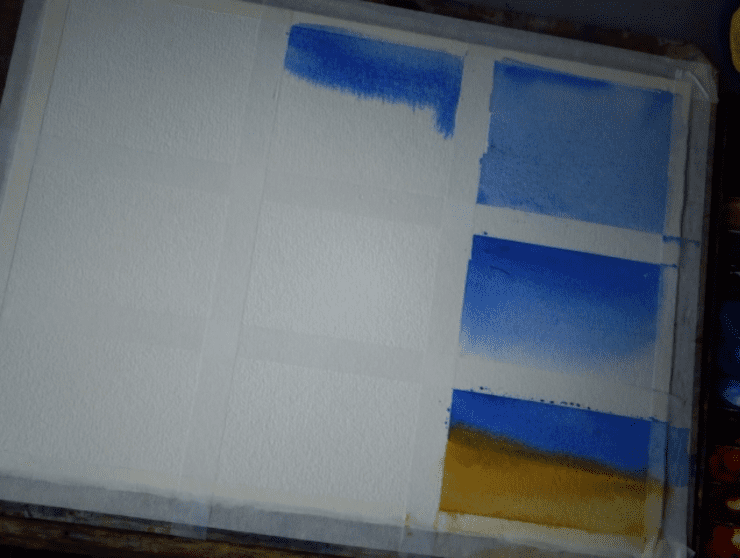Once you have mastered the variegated wash, you can then start to experiment with using the same technique but on wet paper instead of dry. When you put watercolor paint on dry paper, you can achieve sharp edges to shapes, whereas when you paint on wet paper, the colors spread into one another creating soft edges and blending of color.
How do you create a variegated wash wet-in-wet?
First you saturate your paper with pure water. This gives the paint color more time to mingle with the other colors you apply to the paper.
Again you can choose a well saturated blue, such as cobalt blue, for your first variegated wash and a color to match the ground, such as raw siena, for your second variegated wash. Fill your brush with the first variegated wash color, and starting in the upper left corner draw your brush across the paper to the upper right corner.
Next, wash your brush and fill it with the second variegated wash color. If you angle the paper slightly, you will see that the two washes blend together to create a softening between the colors.
If you follow this up with a third color, such as red, you can make the foreground warmer. Now you have a basic landscape that you can build on.
Tips
Where the blue and siena colors overlap, you will notice you get a different color as they blend together. You can use this overlapping area to suggest trees or other vegetation.
Practice creating wet-in-wet washes with different colors.
